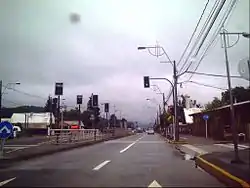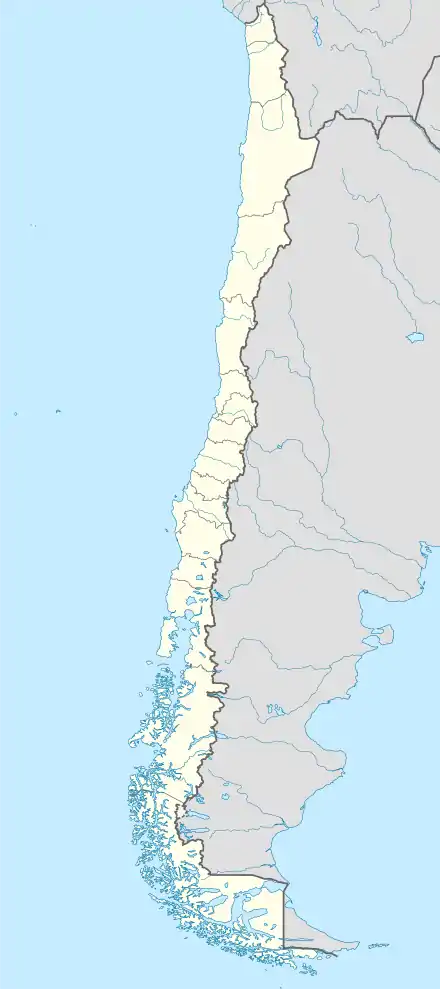Chiguayante
Chiguayante (Spanish pronunciation: [ʃiɣwaˈʝante]) is a Chilean city and commune in Concepción Province, Biobío Region. It is part of Greater Concepción.
Chiguayante | |
|---|---|
 | |
 Coat of arms  Location of Chiguayante commune in the Biobío Region  Chiguayante Location in Chile | |
| Coordinates: 36°55′S 73°01′W | |
| Country | Chile |
| Region | Biobío |
| Province | Concepción |
| Established | 1996 |
| Government | |
| • Type | Municipality |
| • Alcalde | Tomás Solís Nava (PS) |
| Area | |
| • Total | 71.5 km2 (27.6 sq mi) |
| Elevation | 249 m (817 ft) |
| Population (2012 Census)[3] | |
| • Total | 84,718 |
| • Density | 1,200/km2 (3,100/sq mi) |
| • Urban | 81,238 |
| • Rural | 64 |
| Demonym(s) | Chiguayantino |
| Sex | |
| • Men | 38,524 |
| • Women | 42,778 |
| Time zone | UTC−4 (CLT) |
| • Summer (DST) | UTC−3 (CLST) |
| Area code(s) | 56 + 41 |
| Website | Official website (in Spanish) |
Demographics
According to the 2002 census of the National Statistics Institute, Chiguayante spans an area of 71.5 km2 (28 sq mi) and has 81,302 inhabitants (38,524 men and 42,778 women). Of these, 81,238 (99.9%) lived in urban areas and 64 (0.1%) in rural areas. The population grew by 44.2% (24,931 persons) between the 1992 and 2002 censuses.[3] It had an estimated 2010 population of 119,265.
Administration
As a commune, Chiguayante is a third-level administrative division of Chile administered by a municipal council, headed by an alcalde who is directly elected every four years. The 2008-2012 alcalde is Tomás Solis Nova (PS).[1][2]
Within the electoral divisions of Chile, Chiguayante is represented in the Chamber of Deputies by José Miguel Ortiz (PDC) and Enrique Van Rysselberghe (UDI) as part of the 44th electoral district, (together with Concepción and San Pedro de la Paz). The commune is represented in the Senate by Alejandro Navarro Brain (MAS) and Hosain Sabag Castillo (PDC) as part of the 12th senatorial constituency (Biobío-Cordillera).
References
- "Asociación Chilena de Municipalidades" (in Spanish). Retrieved 7 February 2011.
- "Municipality of Chiguayante" (in Spanish). Retrieved 7 February 2011.
- "National Statistics Institute" (in Spanish). Retrieved 13 December 2010.
External links
- (in Spanish) Municipality of Chiguayante
| Wikimedia Commons has media related to Chiguayante. |

